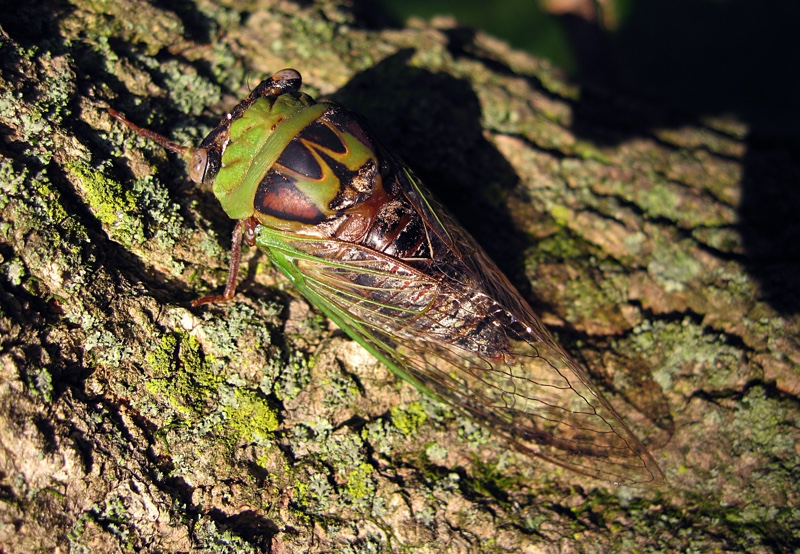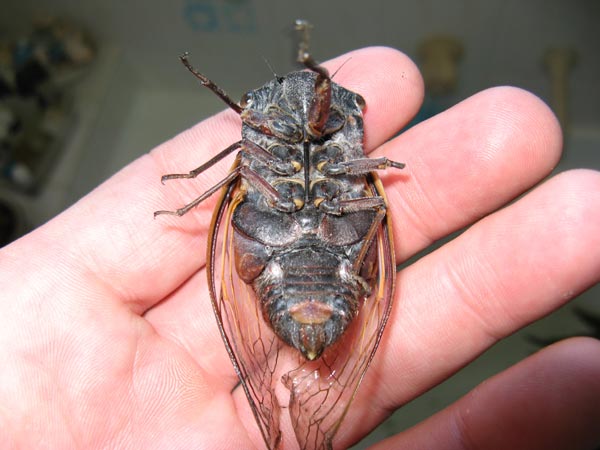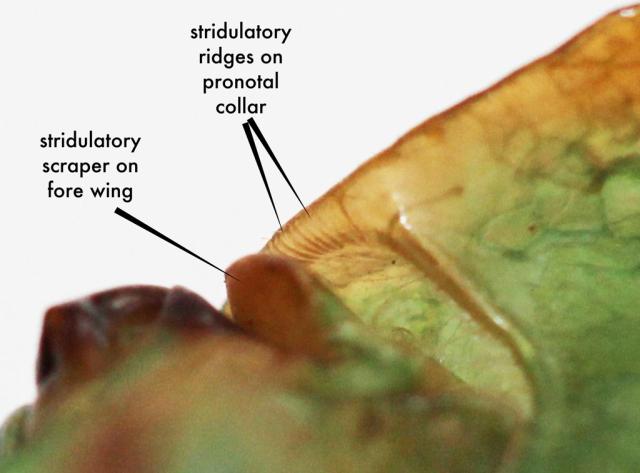Africa is home to the Loudest cicada
A recent BBC article says researcher John Petti as found the answer: Brevisana brevis, an African cicada, reaches 106.7 decibels — with the loudest North American cicada, Megatibicen pronotalis walkeri at 105.9 decibels. Their sound was measured at a distance of 50cm (approximately 20 inches). Specifics about the equipment used and calibration of said equipment is not mentioned.
There are over 3500 types of cicadas in the world, and for now, Brevisana brevisis the king of the insect noisemakers. More information on Petti’s study can be found here. Sound files of Brevisiana brevis.
In North America
The article does introduce room for skepticism and debate, by noting that other species come very close (Diceroprocta apache), that the Megatibicen pronotalis walkeri alarm call reaches 108.9 decibels and a North American study that suggests decibels are correlated to body mass (and Brevisana brevis is not the most massive cicada).

Megatibicen pronotalis photo by Roy Troutman, taken in Batavia, Ohio.
In Australia
According to the book Australian Cicadas by M.S. Moulds (New South Wales University Press, 1990) Cyclochila australasiae and Thopha saccata reach nearly 120db at close range. The “at close range” might be the key difference in measuring the sound, as Petti measured at a distance of 50cm.

Double Drummer (Thopha saccata), a cicada found in Australia, can reach 120db at close range. Photo by Kevin Lee.
What about Magicicada in the U.S.?
Personally, I’ve observed Magicicada cassini choruses achieve between 85 & 86 decibels (link to video), and M. cassini responding to fingersnaps (mimics female wing flicks) at as high as 116 decibels (link to video) 35s in). The 116 decibels level was recorded with the insect standing on the microphone of my Extech 407730. Magicicada choruses have been documented to reach 100 decibels
Magicicada chorus at around 80db:
Some people want to know how loud a cicada can get just because it is a cool fact to know, but others are concerned about noise-induced hearing loss (about which, I am not an expert). Both decibels and prolonged exposure seem to matter. According to the National Institute on Deafness and Other Communication Disorders page on Noise-Induced Hearing Loss, prolonged exposure to sounds over 85db can cause hearing loss (just above the chorus of a Magicicada). The WebMD harmful noise levels page has chainsaws and leaf blowers in the range of the loudest cicadas. Lessons learned: 1) Make sure you wear hearing protection if you plan on blowing leaves or searching for the loudest cicada, and 2) Do not complain about the cicadas in your yard — complain about your neighbors and their leaf blowers.
Male cicadas, in case you were wondering, use their opercula (flaps on their abdomen) to cover their tympana (the cicadas hearing organs) when they sing, so they don’t damage their own hearing. Cicadas — male and female — listen with their tympana.




